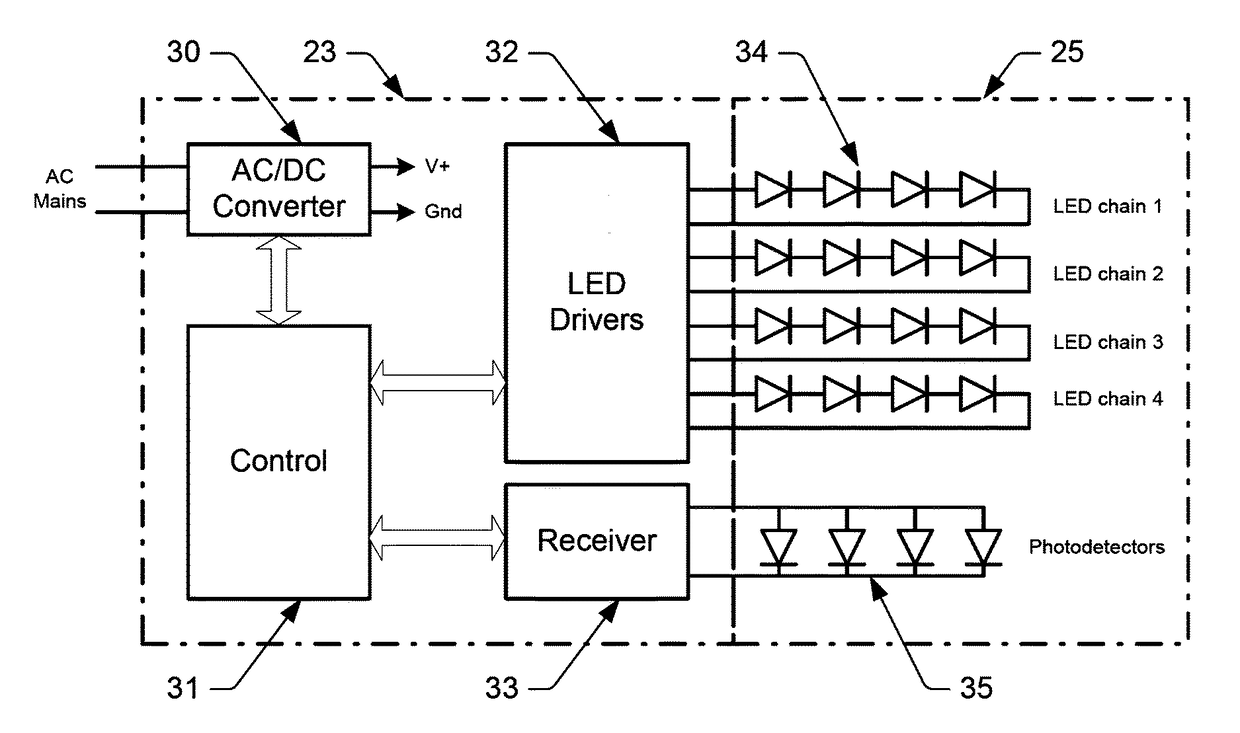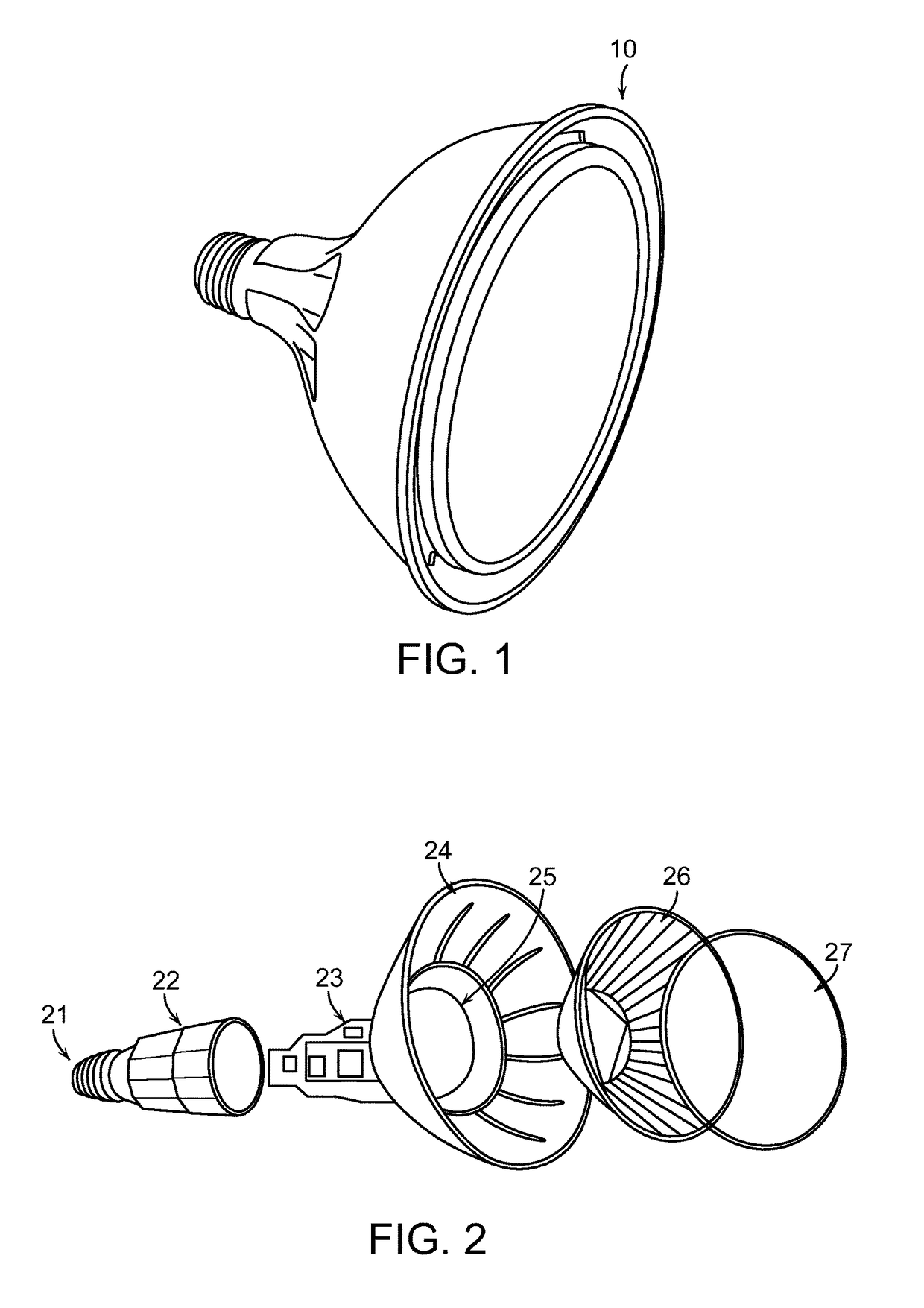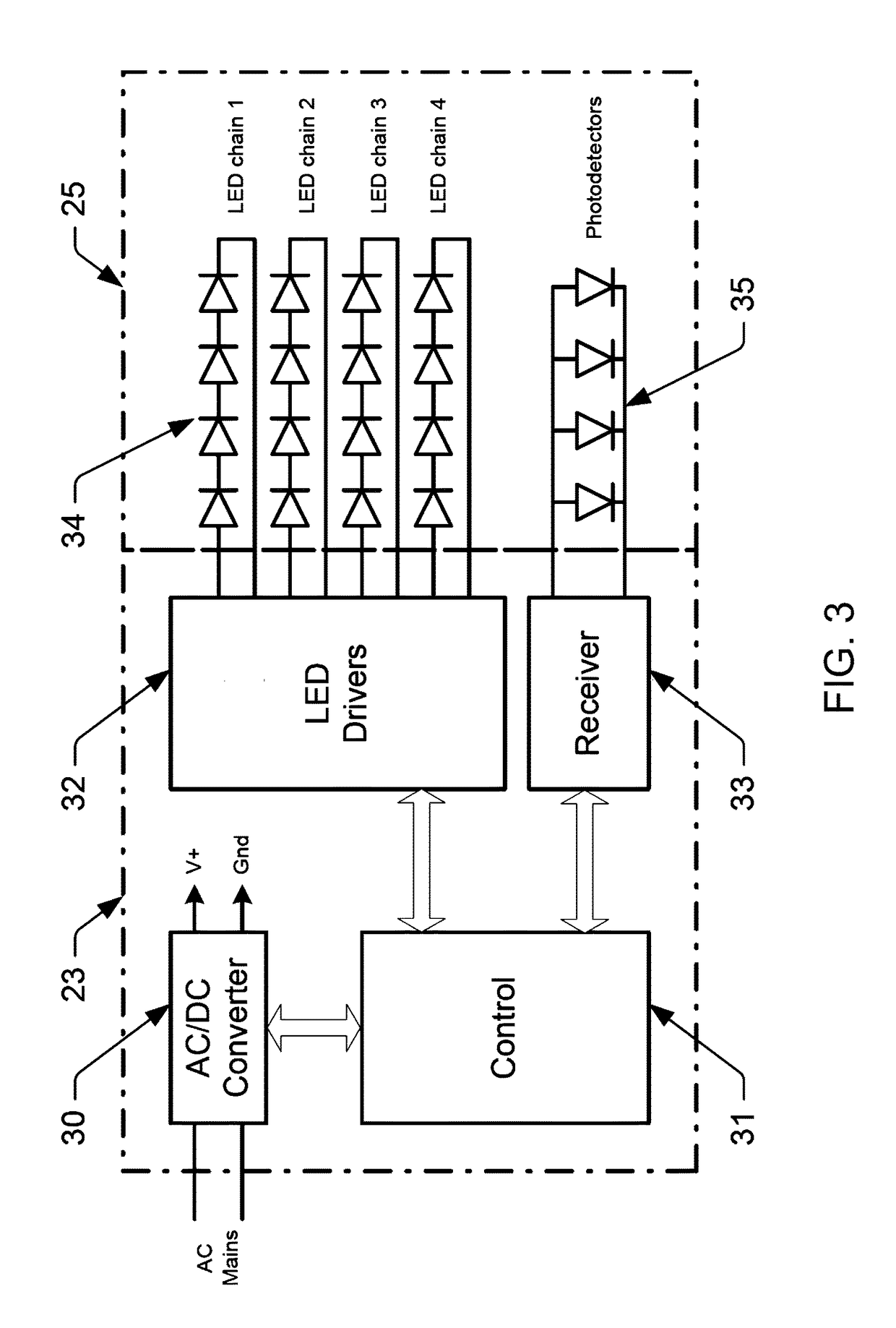Color Mixing Optics for LED Illumination Device
a technology of led illumination and mixing optics, which is applied in the direction of semiconductor devices for light sources, lighting and heating apparatus, light source combinations, etc., can solve the problems of inconvenient measurement of light guide dimensions, large and inefficient dimensions, and easy led aging of color accuracy in hue products, so as to minimize interference from external light sources, minimize any spatial variation in photocurrent, and improve spatial uniformity
- Summary
- Abstract
- Description
- Claims
- Application Information
AI Technical Summary
Benefits of technology
Problems solved by technology
Method used
Image
Examples
Embodiment Construction
[0041]Turning now to the drawings, FIG. 1 is a picture of an example illumination device 10, which according to one embodiment, is an LED lamp with a PAR38 form factor. As described in more detail below, LED lamp 10 produces light over a wide color gamut, thoroughly mixes the color components within the beam, and uses an optical feedback system to maintain precise color over LED lifetime. LED lamp 10 is preferably powered by the AC mains and screws into any standard PAR38 fixture. The light beam produced by LED lamp 10 is substantially the same as the light beam produced by halogen PAR38 lamps with any beam angle, but typically between 10 and 40 degrees.
[0042]LED lamp 10 is just one example of a wide color gamut illumination device that is configured to provide uniform color within the beam and precise color control over LED lifetime. In addition to a PAR38 form factor, the inventive concepts described herein could be implemented in other standard downlight form factors, such as PAR...
PUM
 Login to View More
Login to View More Abstract
Description
Claims
Application Information
 Login to View More
Login to View More - R&D
- Intellectual Property
- Life Sciences
- Materials
- Tech Scout
- Unparalleled Data Quality
- Higher Quality Content
- 60% Fewer Hallucinations
Browse by: Latest US Patents, China's latest patents, Technical Efficacy Thesaurus, Application Domain, Technology Topic, Popular Technical Reports.
© 2025 PatSnap. All rights reserved.Legal|Privacy policy|Modern Slavery Act Transparency Statement|Sitemap|About US| Contact US: help@patsnap.com



